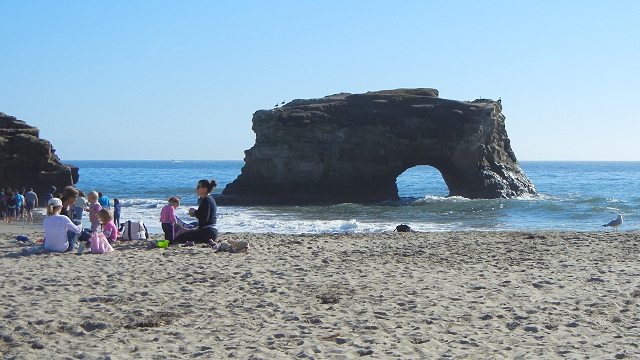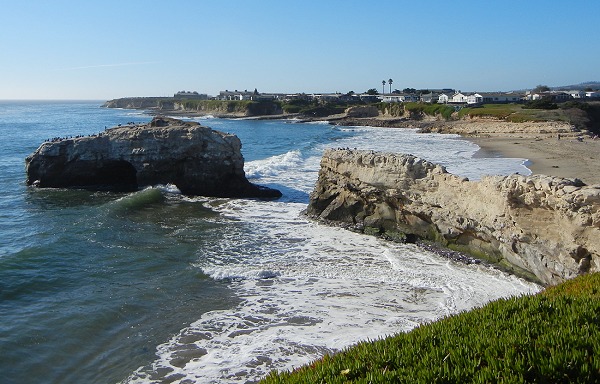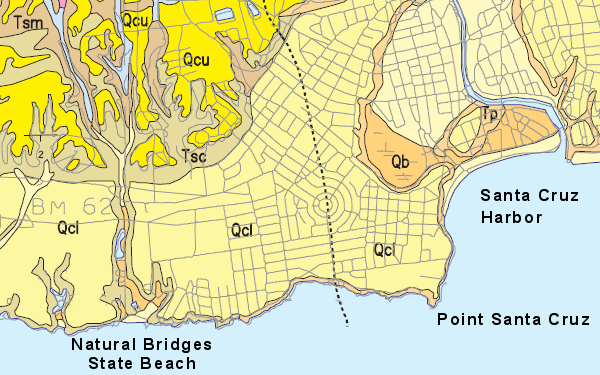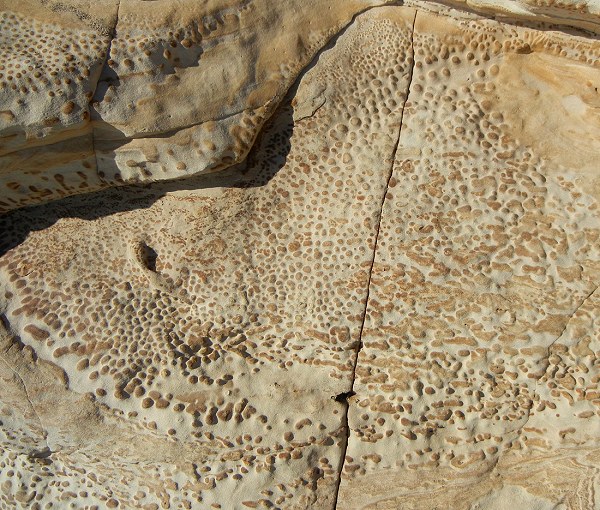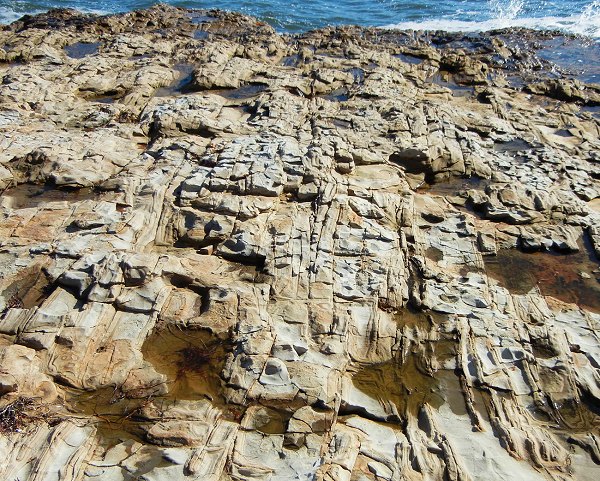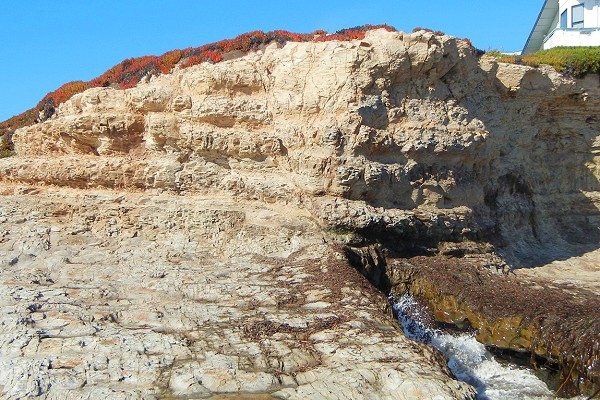Natural Bridges State Beach is in Santa Cruz, just west of downtown. It's an easy outing and a nice spot, popular for its sheltered beach and butterfly trees. But the official park site says nothing about the rocks, so I must remedy that.
First of all, there's only one natural bridge at Natural Bridges, a sea arch next to a bedrock promontory.
The gap between these two landforms used to be a second arch, and beyond them was a third. People used to drive out on the arches and have picnics. This was around the same time that Yosemite conducted public bear feedings and dumped bonfires over the cliffs every summer evening. Now park systems take preservation more seriously, and the remaining arch is off limits. Even so, the sea will take it down some day, as it did the other two, but without human help this time.
Notice the flat surface of the surrounding land. All of this is the lowest of Santa Cruz's famous marine terraces, carved by the ocean waves some 80,000 years ago when the land lay lower and the sea level was steady. Since that time the sea has fluctuated and the land has risen. Several older terraces lie higher along the coast. The terraces are topped with a thin layer of beach sand and gravel. Today's seacliffs expose the older rock beneath. And with that, let's look at the geologic map of the area (from U.S. Geological Survey Open-File Report 97-489).
